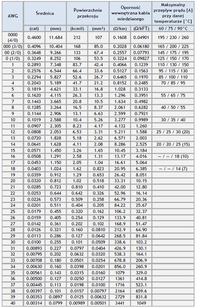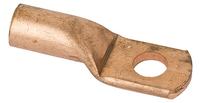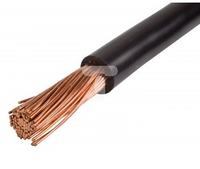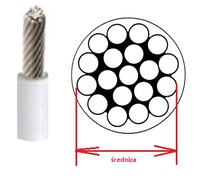

Czy wolisz polską wersję strony elektroda?
Nie, dziękuję Przekieruj mnie tamelpapiotr wrote:I just want to point out that you cannot be sure of the conductor cross-section by measuring its diameters. I have used a comb to measure the cross section of wires. I do not remember the span (from - to), but by inserting the wire into the appropriate slot, you could read its cross-section, e.g. 1.5mm2 or 2.5mm2. And there were different cables, with different play in a specific slot, and labeled with the same cross-section on the manufacturer's label.I understand what my colleague is talking about, but here the actual size of the conductor cross-section in this (thin wires) or in the second case is not so important from the electrician's point of view.
A difference of the order of 1 mm?, for example, has no significant effect on large cross-sections.
It is advisable to read here the so-called skin effect of the current flow.

NOWY_UCZEŃ wrote:because as I wrote in # 3it does not work with strings for single strands only


stanislaw1954 wrote:Then measure the diameter of the cable you have, and then order the tip. By the way, you'll either use a press or solder the tip, so a little slack will be lost.
NOWY_UCZEŃ wrote:

NOWY_UCZEŃ wrote:And the oxidation of copper. However, when soldering, the wire - tip tube contact is permanently secured and the contact is concrete.
hazet wrote:Buddy Hazet.The total cross-section in the string is the sum of the cross-sections of individual wires. However, the diameter is also influenced by the size of the space between the individual wires.
elpapiotr wrote:Friend Hazet, The student wants to distinguish whether it is "16" or "25", is not the cable manufacturer.A difference of the order of 1 mm?, for example, has no significant effect on large cross-sections.
15kVmaciej wrote:Maybe fairy tales. It depends on what currents and what environment.
retrofood wrote:
And a lot of such "depends".
Of course, it is true that it "can" be soldered well. However, you have to keep so many different "depends" that the student can put it between fairy tales.
What i wrote.

Moderated By Łukasz-O:3.1.2-3.1.3. Do not use multiple forum accounts. This action confuses users and causes statistics to be incorrectly presented.
I'm blocking hazet and NEW_UCZEŃ accounts for clarification.
NOWY_UCZEŃ wrote:
I feel a bit cynic in this suggestion that as a crimper it is only available for
professionals with a very thick wallet.

NOWY_UCZEŃ wrote:.... As for soldering, I can use a propane butane + oxygen burner. It is obvious that you will not solder it with a transformer soldering iron. I do not know why this irony in the statements.
NOWY_UCZEŃ wrote:Pushing the topic further. LGY 1X25 wires can be with thin and thick wires or are they all the same? If they are different, what do you mean with thick and thin wires?
zbich70 wrote:..... You cannot measure experiences with a caliper ...
NOWY_UCZEŃ wrote:Well, it is not so for hobby work
NOWY_UCZEŃ wrote:about 70V DC but high currents.
Moderated By Łukasz-O:3.1.2-3.1.3. Do not use multiple forum accounts. This action confuses users and causes statistics to be incorrectly presented.
I'm blocking hazet and NEW_UCZEŃ accounts for clarification.